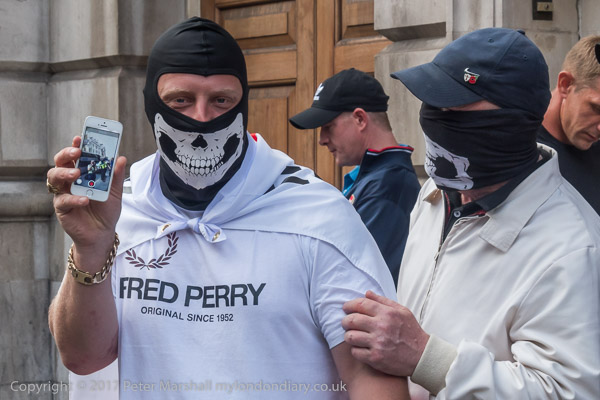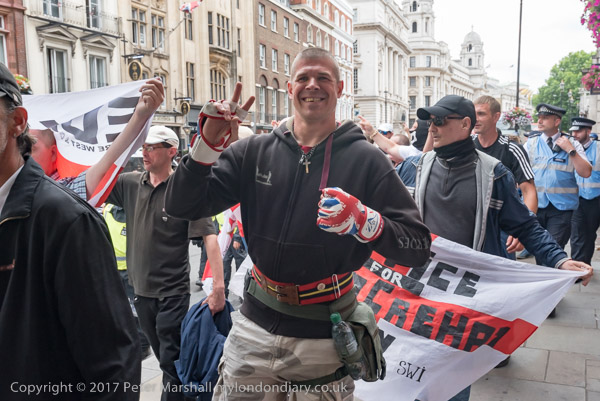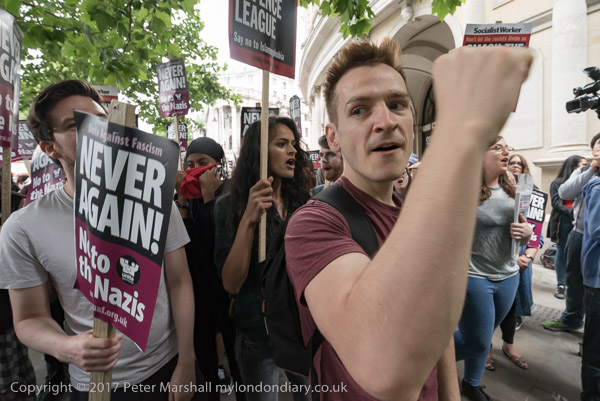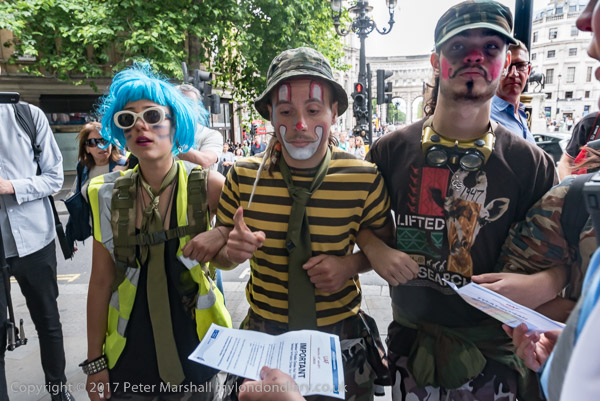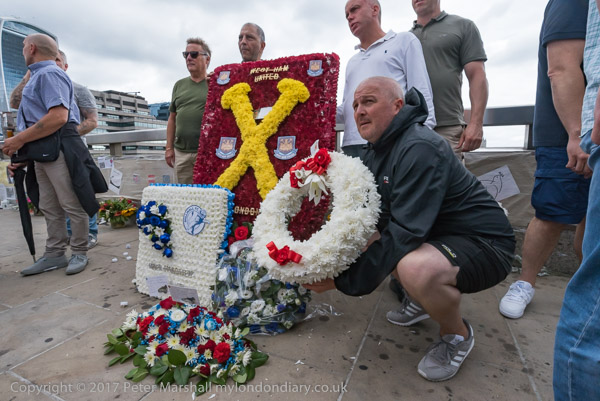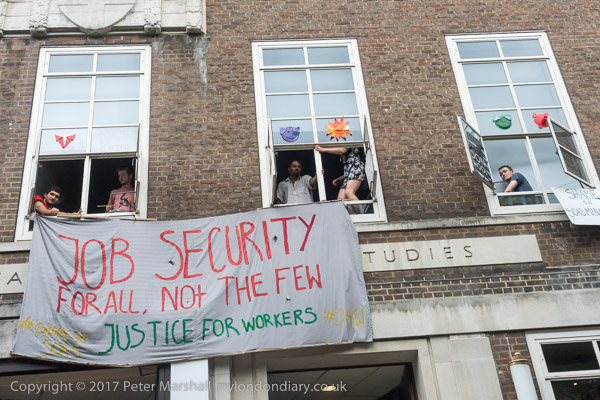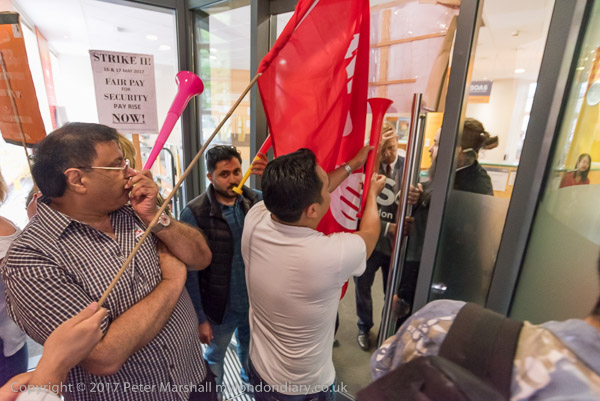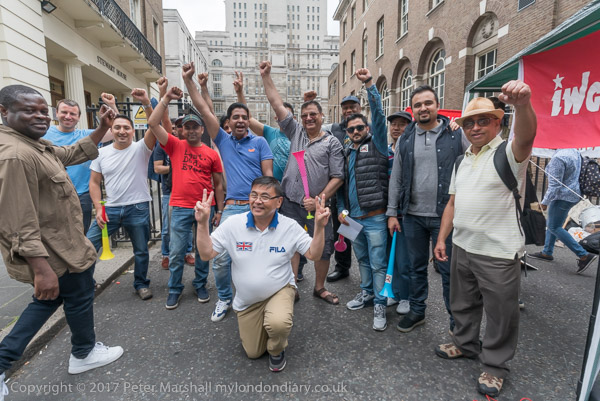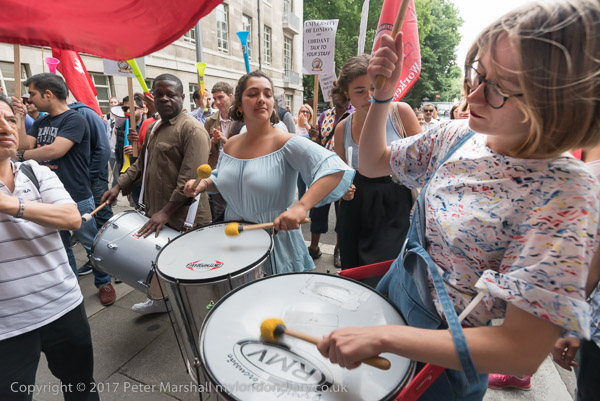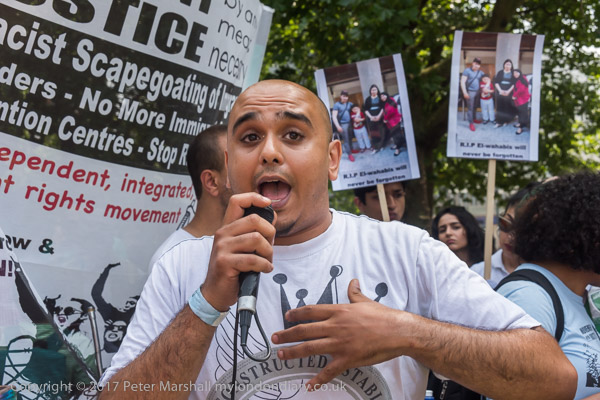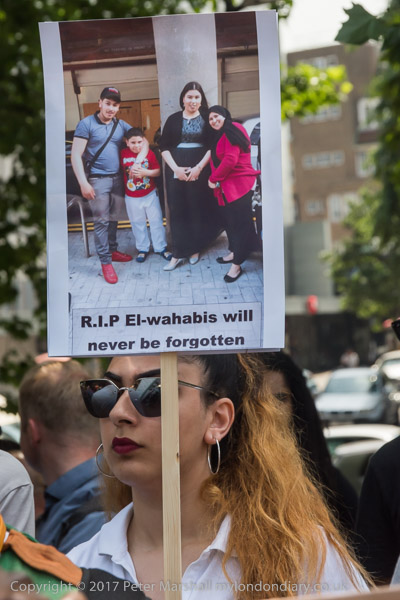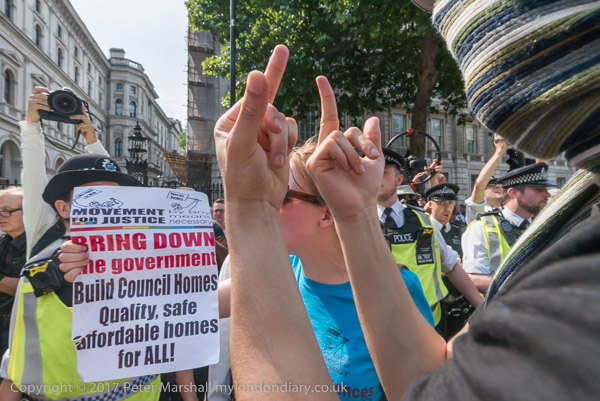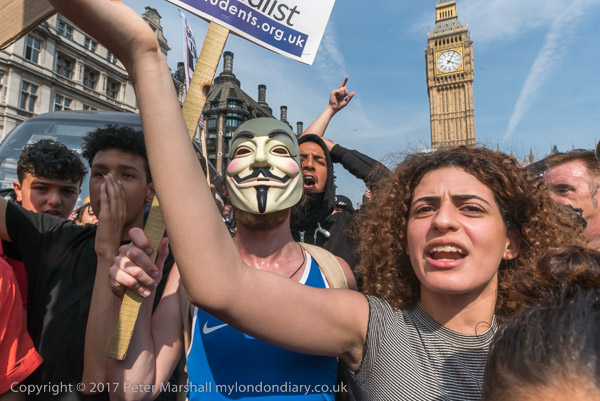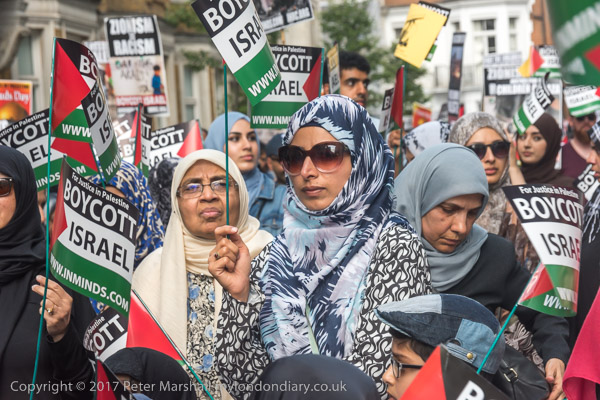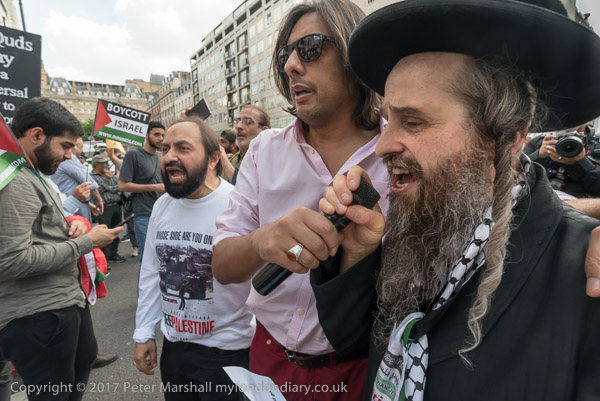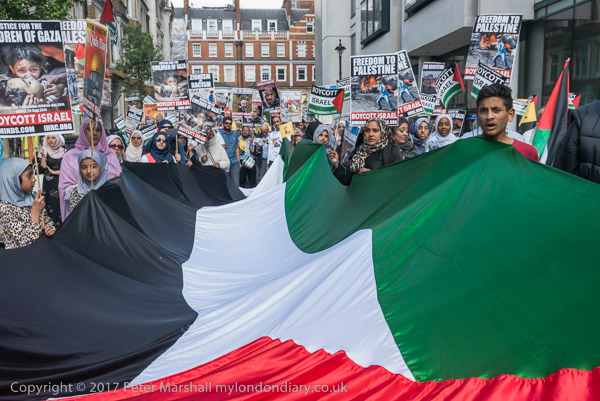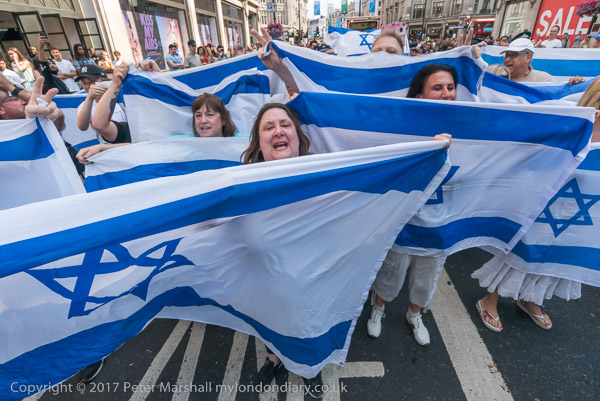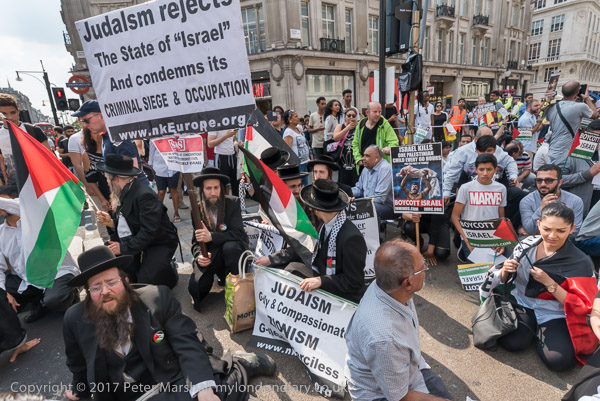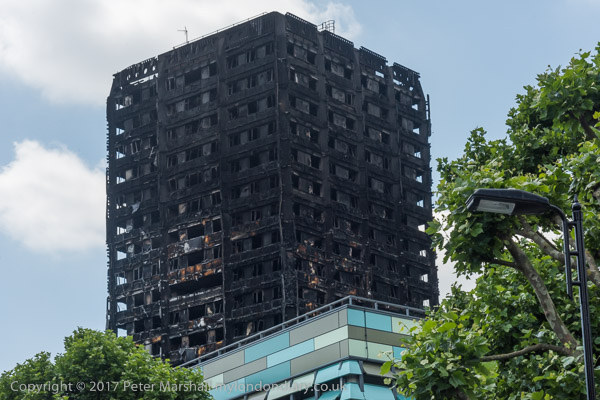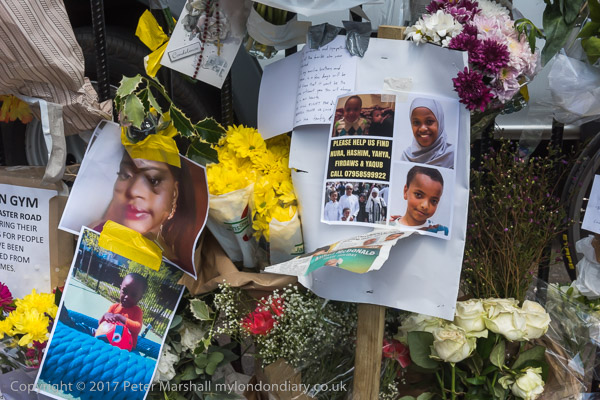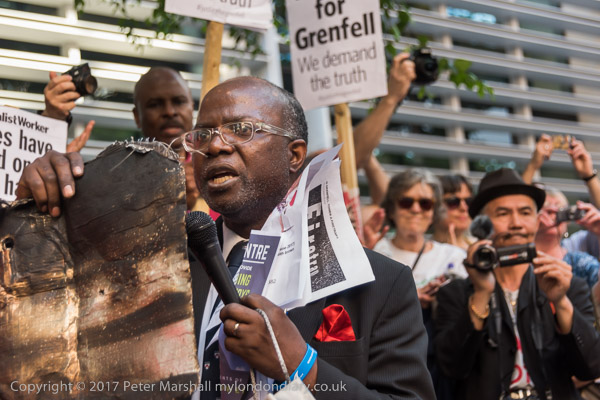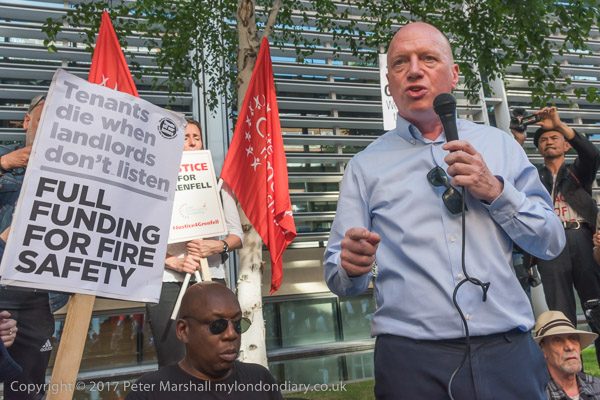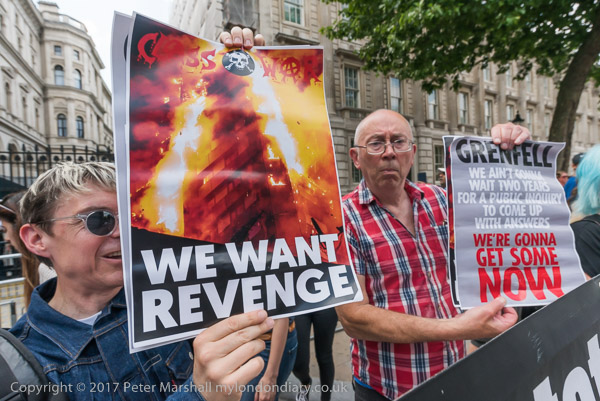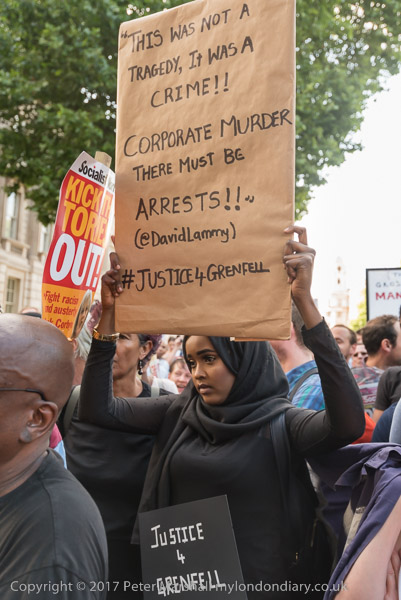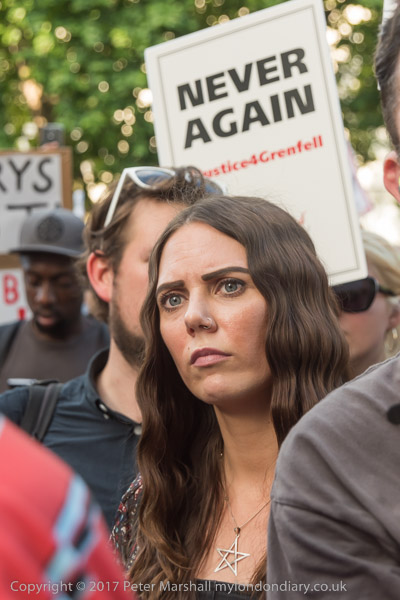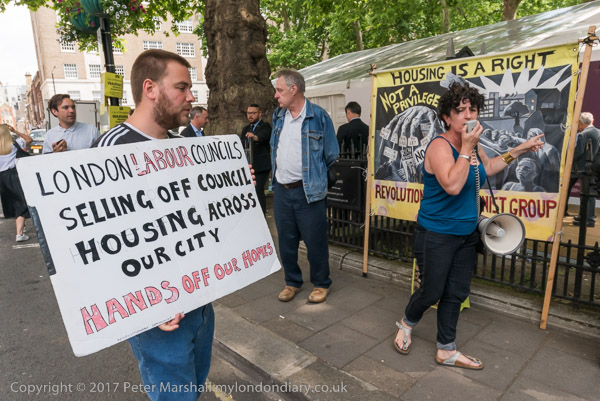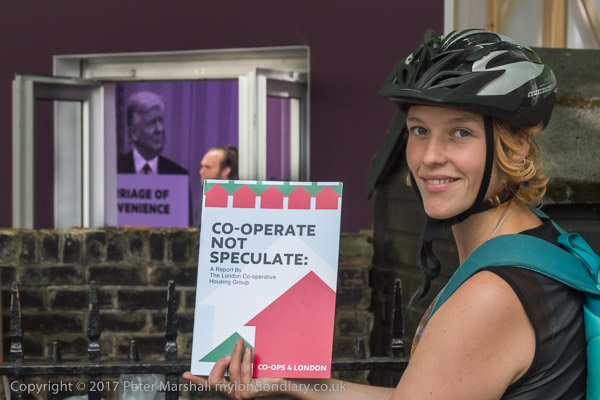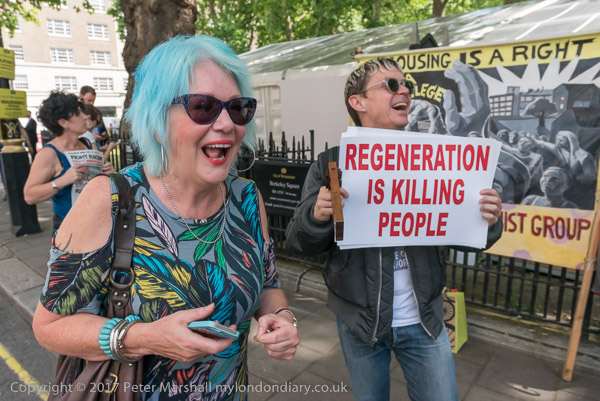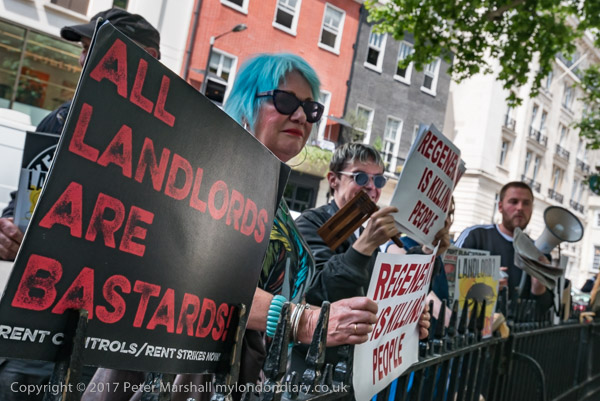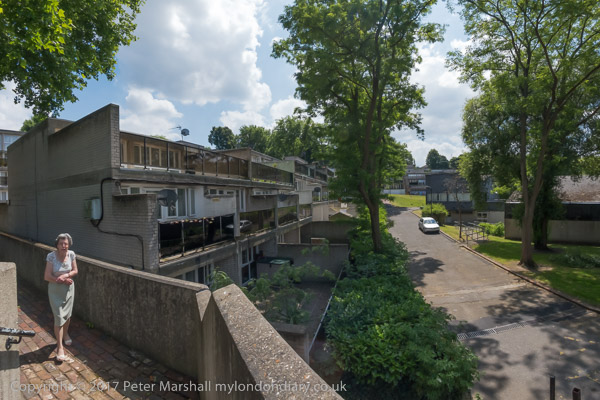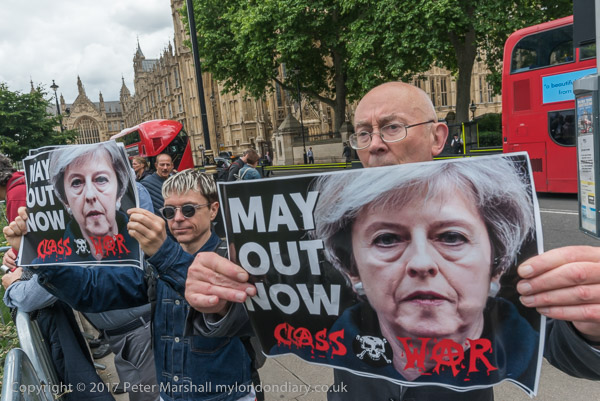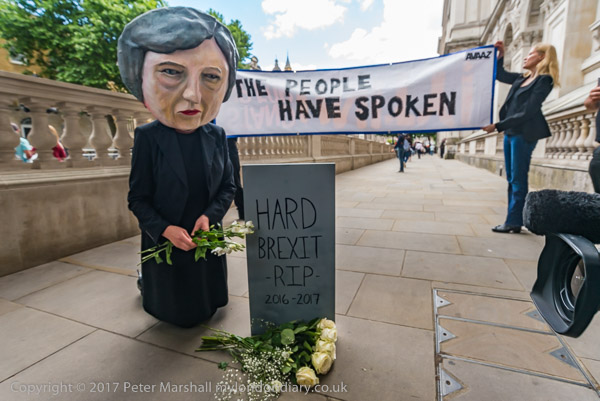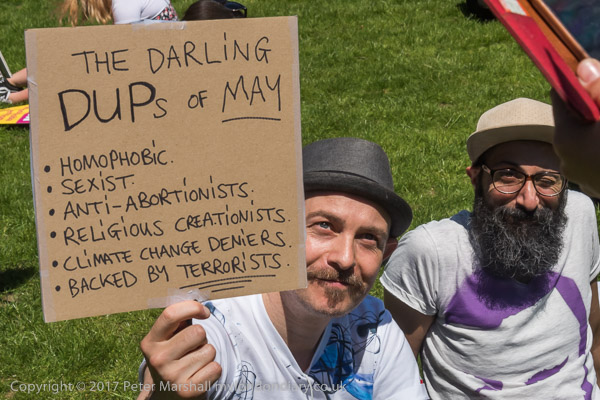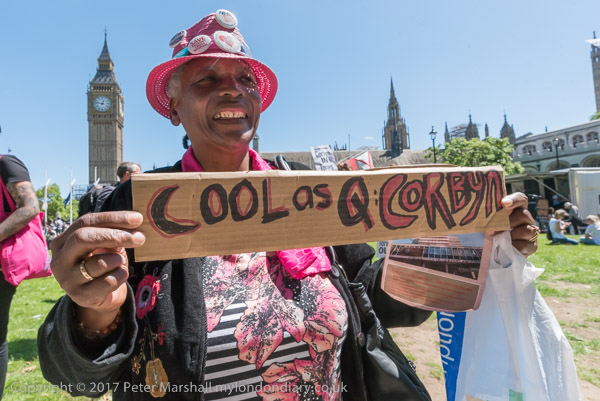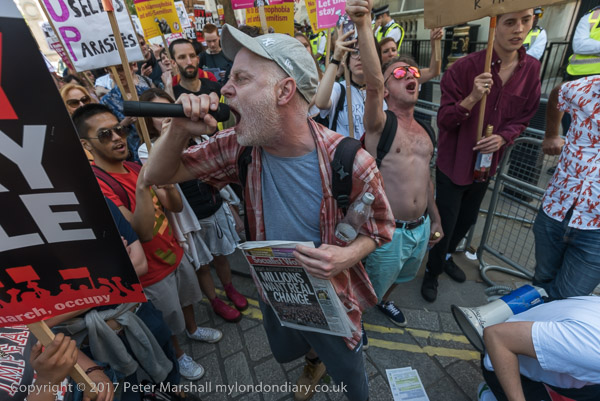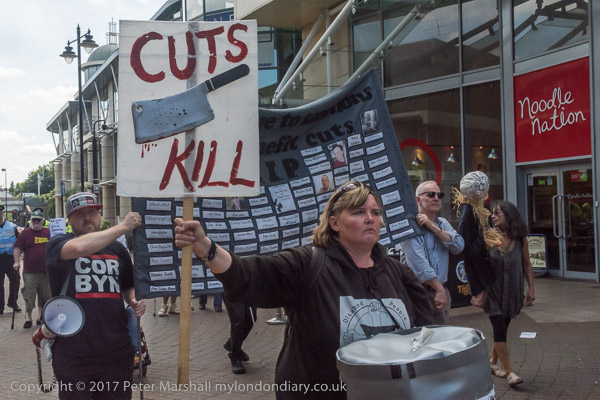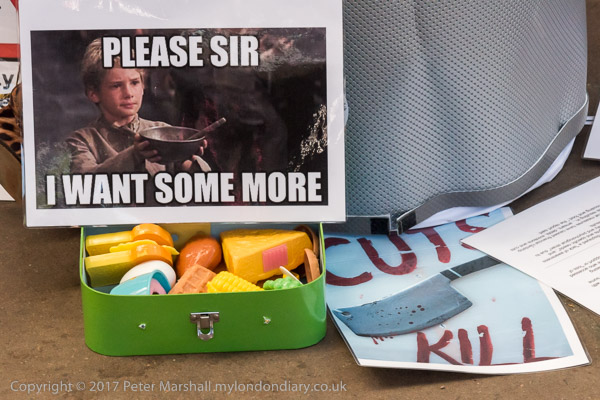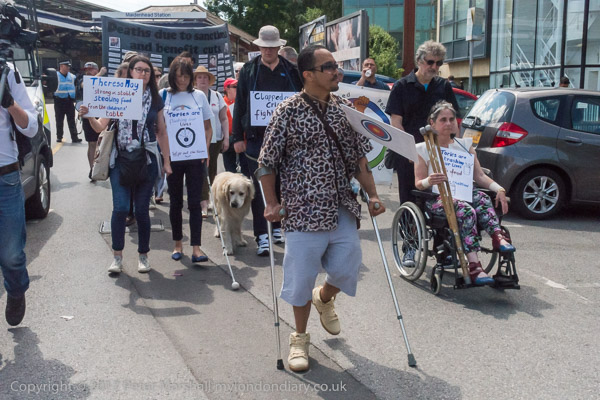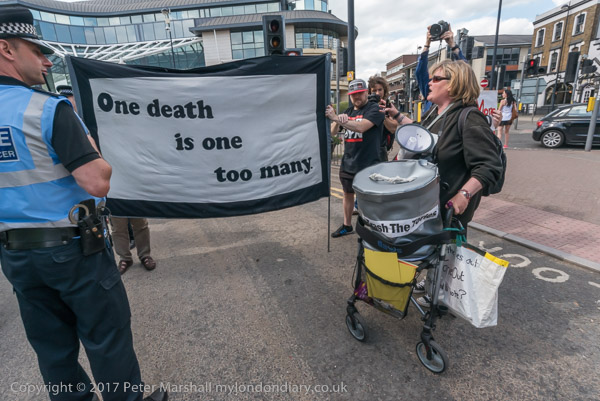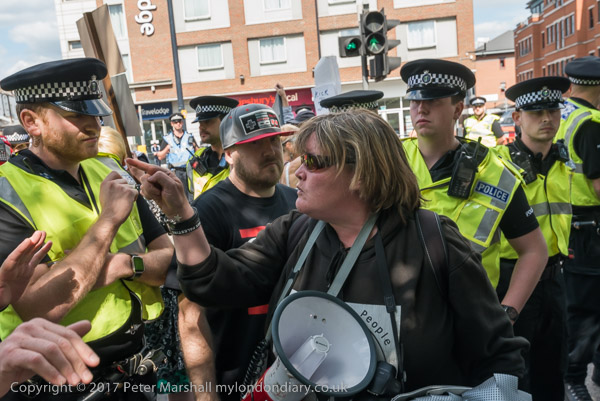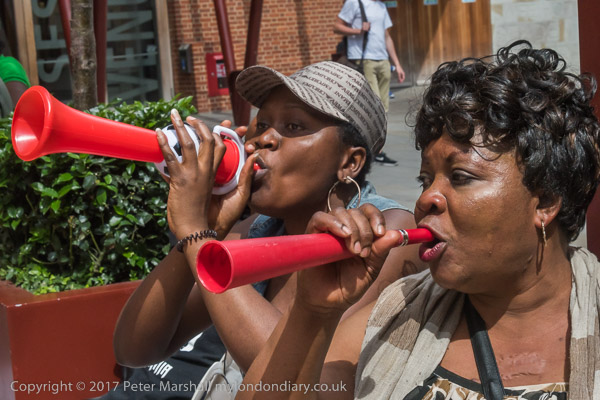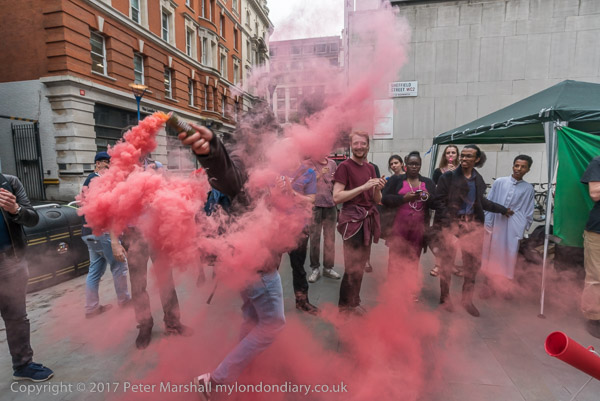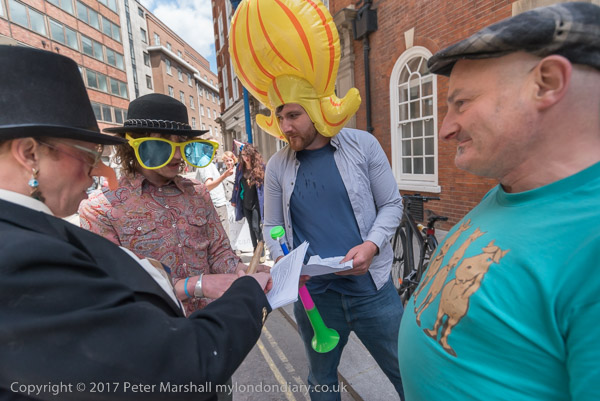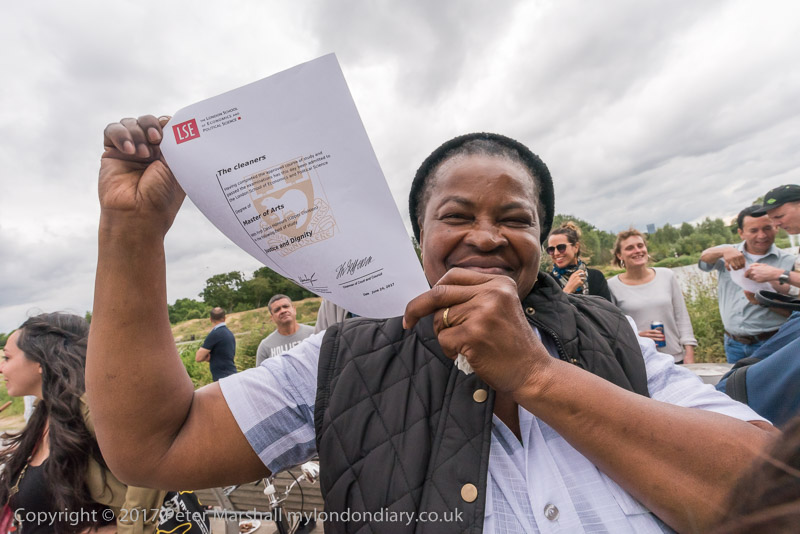There were I think over 20,000 people on the march organised by the People’s Assembly Against Austerity from the BBC to Parliament Square calling for Theresa May and the Conservatives to go, and I photographed quite a few of them.
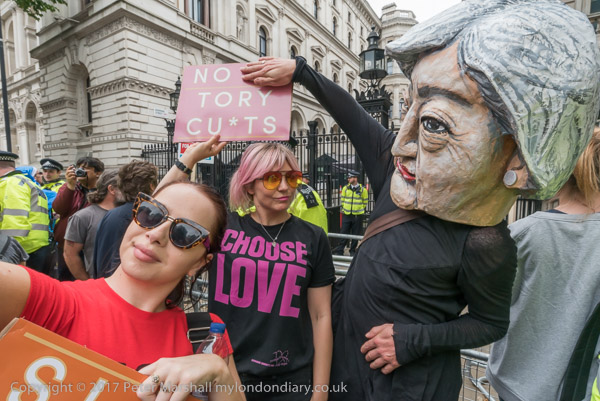
Theresa May at Downing St
Taking part were people from a wide range of groups and causes, all affected by the cuts under the Tories and wanting change to policies that put the interests of ordinary people, particularly those in greatest need, ahead of those of the already rich who include many Tory MPs and the relatively small group of people who donate to Tory Party funds. Tory Party membership has declined dramatically and is now thought to be around 70,000, roughly a tenth of Labour membership, and smaller than that of the Lib-Dems and SNP.
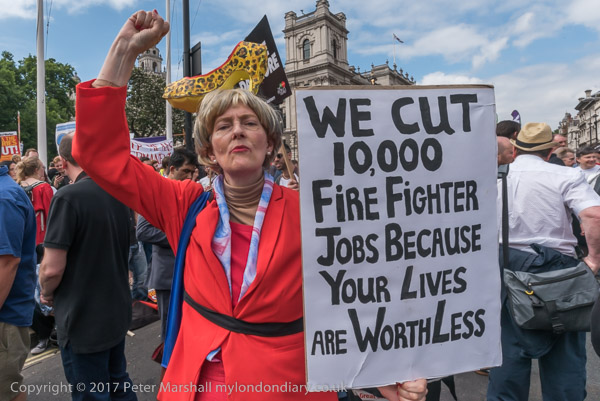
Theresa May in Parliament Square
With so many to choose to photograph I doubt if anyone’s pictures can be truly representative, but I tried hard to show the wide range of causes as well ad photographing the people and posters and banners that seem most interesting.

One of the trade union banners that attracted me was a new one for Hull City Unison Branch, which includes Amy Johnson in ‘Jason’ towing a banner with the emblems of the 3 unions that formed UNISON, the Humber Bridge and Spurn Lighthouse and a lifebelt, the Spanish Republican flag and two of the eight from Hull who went to fight with the International Brigade, dockers leader Walter Greendale, Hull’s Rugby League legend Clive O’Sullivan, Mary Murdock, Hull suffragette and the first woman doctor in the UK, Tony Benn, a member of Hulls LGBT community, Headscarf Revolutionary ‘Big Lil’ Bilocca who forced legislation to improve safety on trawlers and Hull’s iconic ‘Dead Bod’.

Of course like most photographers I was drawn to the various smoke flares set off by some of the marchers, which always add a little drama. And despite their aversion to ‘A to B’ marches, Class War were on this one, though they disappeared briefly before the end.

I was sorry to miss them when they returned to Parliament Square to confront Jeremy Corbyn over the terrible Labour housing policies of most Labour councils, with almost 200 council estates on the list for demolition and replacement by high cost housing, in what is a far greater threat to social housing than the Blitz, forcing those on low pay out of much of London in a huge programme of social cleansing. Of course it is a program driven by Corbyn’s enemies on the right of the party and there may be some changes in Labour policies in boroughs as Corbyn supporters – many of whom were on the march and chanting that drearily sycophantic ‘Oh Jeremy Corbyn’ flex their muscles and become local councillors.
Its an issue which Class War and their friends in ASH (Architects for SOcial Housing) have done more than any other group to put on the agenda, and they have been at the forefront in other housing issues, for example with the lengthy campaign against ‘Poor Doors’ – separate doors for social tenants and the wealthy living in the same block which I recorded in a magazine, still available from Blurb, or direct from me to UK addresses for £7.50 including postage.
